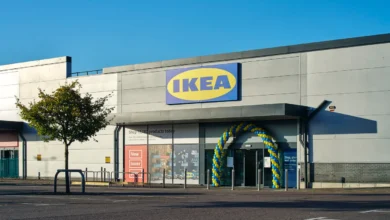A practical guide to retail packaging
Retail packaging serves as the first point of physical contact between your brand and customers. In this guide, we'll explore how to create impactful retail packaging that not only leaves a positive impression, but also promotes sustainability

Register to get 1 free article
Reveal the article below by registering for our email newsletter.
Want unlimited access? View Plans
Already have an account? Sign in
Understand your brand and target audience
Before designing your retail packaging, understand your brand identity and the preferences of your target audience. The packaging should reflect your brand’s values and resonate with your customers.
Choose sustainable materials
Opt for eco-friendly materials for your packaging, such as recycled paper, biodegradable plastics, or reusable options. Sustainable packaging materials not only reduce environmental impact, but also appeal to eco-conscious consumers.
Design eye-catching packaging
Your packaging should be visually appealing and make a memorable impression, so invest in a high-quality design that aligns with your brand and product. Also, consider using vibrant colours, engaging graphics, and a clear, easily recognisable logo.
Minimise packaging waste
Reducing unnecessary packaging is essential for sustainability, so ensure your packaging is appropriately sized for your products to minimise excess material and reduce shipping costs.
Incorporate sustainable printing methods
Choose printing methods that are environmentally friendly, such as water-based inks and soy-based inks. These options have a lower environmental impact compared with traditional inks.
Educate customers on packaging
Use your packaging as a tool to educate customers about sustainability by including information on how to recycle or repurpose the packaging. Meanwhile, you should also share your sustainability initiatives and certifications.
Implement eco-friendly packaging practices
Consider innovative packaging solutions, such as compostable bags or reusable packaging options. Some brands are also using packaging made from agricultural waste, like mushroom-based materials.
Promote reusability
Create packaging that customers can reuse in their daily lives. For instance, design boxes that can be repurposed for storage, or bags that can serve multiple purposes.
Offer sustainable alternatives
Give customers the option to choose sustainable packaging materials during the purchase process. This can include a choice between regular and eco-friendly packaging, with pricing incentives for choosing the latter.
Gather customer feedback
It’s also important to listen to your customers’ feedback regarding your packaging; are they satisfied with its sustainability? Use their input to make improvements and adjustments.
Stay compliant with regulations
Ensure that your packaging complies with local and international environmental regulations by staying updated on changes and by adapting your practices accordingly.
Measure and communicate your impact
Quantify the environmental benefits of your sustainable packaging and share these statistics with your customers; transparency builds trust and encourages eco-conscious buying.
Retail packaging serves as a powerful tool for making a positive impression and promoting sustainability. Incorporating sustainable practices and engaging with customers to improve your packaging further demonstrates your commitment to reducing your environmental footprint and contributes to a greener, more eco-conscious future.






